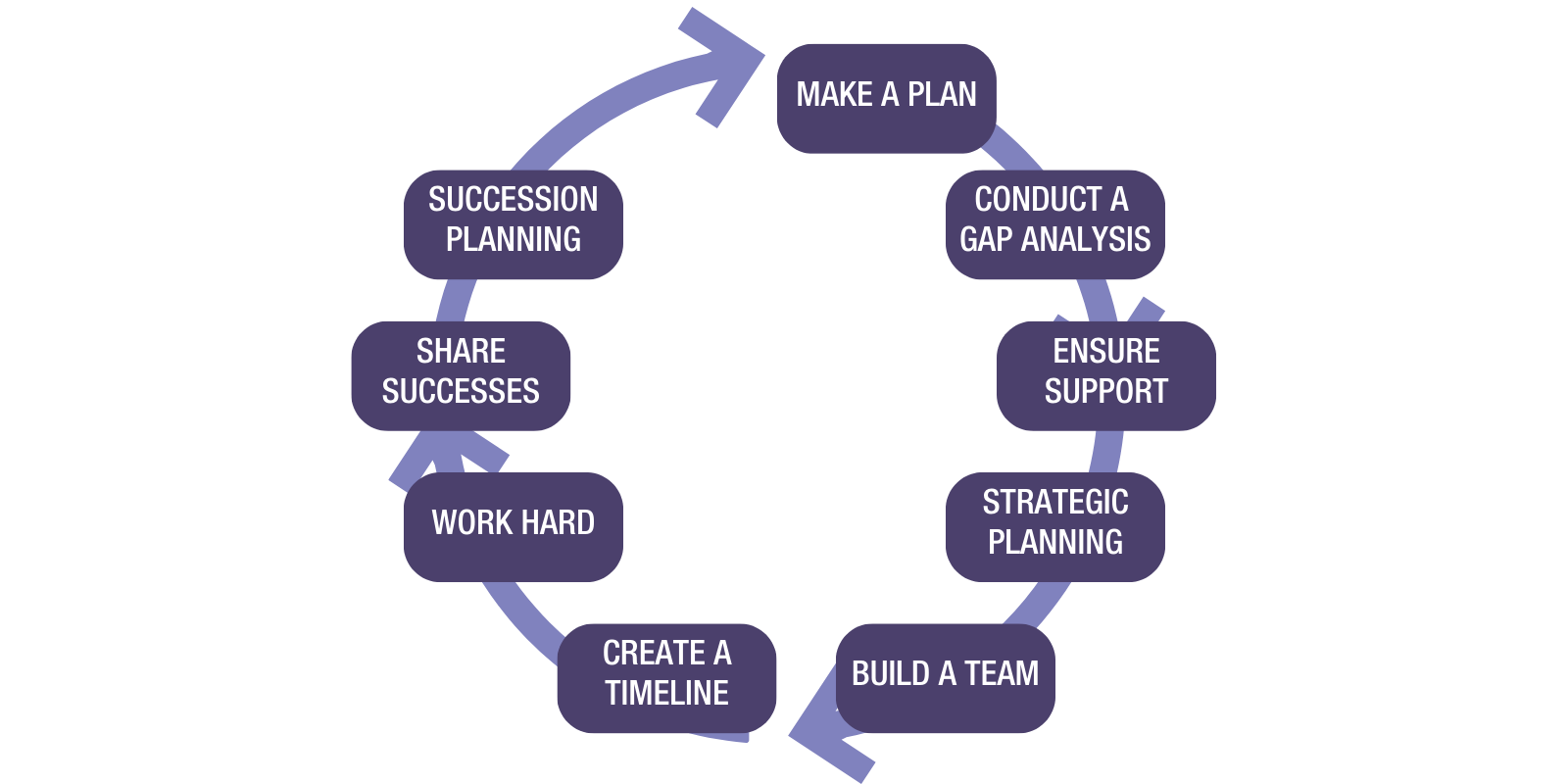My computer screens flickered off and on, and then went dark. The lights went out and it was pitch black in my office. I started to hear the voices of my other colleagues on our nurse residency program ANCC Practice Transition Accreditation Program® (PTAP) accreditation call filter through my battery-powered laptop. In short, a program director’s worst nightmare — a power and internet outage during an accreditation virtual visit. Despite this challenge, our virtual visit was a huge success in our second journey to accreditation. I am sharing some best practices based on our experiences for others embarking on this journey.
In August of 2019, after our initial accreditation with distinction by ANCC PTAP, we outlined a multi-year planned approach to achieve our second accreditation in 2022. We considered multiple factors from leadership changes, anticipated growth of the nurse residency program, needed gaps, and action plans to improve our program, and the updated ANCC PTAP standards. And this was all before COVID-19 disrupted our entire healthcare system. Taking a thoughtful approach to leading a large, multi-site, nationally recognized Nurse Residency Program required support and planning. Whether you are considering transition to practice accreditation for the first or subsequent time, establishing a strategy will enhance success.

Step 1: Make a plan
This plan must include a timeline, required resources, and goals to meet along the journey. We started a tracking document at the end of our initial accreditation in 2019, revisited it in early 2021 to ensure we were still on track, and referenced it frequently in our timeline adjustments.
Step 2: Conduct a gap analysis
Crosswalk any applicable standards with your current program. We tracked each standard and captured potential examples or stories in real time over a two-year period as events occurred. There were potential stories of orientations adapted, nurse resident successes and recognitions, and innovative efforts to enhance the program. While not entirely complete, and not current when we started to write our self-study in 2021, this document did provide a context in which to capture or pursue additional stories and examples.
Step 3: Ensure leadership support and buy-in from all stakeholders
Tracking time spent on accreditation efforts along with outputs provided (document writing, program evaluation and modification, stakeholder relationship building) allowed us to quantify the need for support. Block consistent time on the calendar to focus on accreditation planning and efforts. Make certain that all executive leaders, department leaders, and the nurse residents are aware of accreditation and the why behind decision-making processes. We used our existing Residency Oversight Committee (ROC) as an avenue to obtain this support and buy-in.
Step 4: Utilize strategic planning
Being strategic means anticipating and forecasting strategic changes and timing within your program and organization. We added one site and one workplace setting to our accreditation. We intentionally partnered with those leaders to ensure cohorts started within the timeframe necessary to include in our application. Conversations with leaders and being clear about logistical needs were important throughout this time frame.
Step 4: Build a team
This part was one of the most fun and creative opportunities. In our initial accreditation, we had a PTAP Oversight Committee and PTAP Domain workgroups with about 50 people involved in those meetings. It was difficult to edit with one voice because of the many different contributors to the document. For the second accreditation, our team consisted of one nursing education representative from each site and a contracted program manager. This allowed us to break up the stories and standards, have a spokesperson within each entity to represent updates and changes, and ensure enhanced succession planning.
Step 5: Create a timeline
Our application was due December 2021 with a virtual visit in June of 2022. It seemed that 18 months was an adequate amount of time to work together, but it went fast! Having the lived experience of COVID-19 taught us to not take for granted timeline plans which could be disrupted. Our timeline includes story collection, writing and editing, a nurse resident participation survey (check out this competitive weekly update), and preparation for the virtual visit (see our intro video for participants).
Step 6: Work really, really smart (and hard at times)
Things to consider in this work are the revisions and writing time required, the team members' strengths and questions, opportunities to provide and share feedback, and flexibility of timelines to still meet deadlines.
Step 7: Share successes
After our virtual visit and accreditation call, we gave individual thank you notes to each participant, acknowledged individuals in each entity, and made announcements at leadership councils and nurse residency posts, and via email, monthly CNO nursing newsletters, and on the website. Pictures taken during the various parts of the journey were great to share with the larger organization.
Step 8: Succession planning (back to step 1)
Evaluate the process’ strengths and weaknesses and start thinking about the next cycle and who will be leading those efforts.
Each program is unique and different in how they support transition to practice. As a large, multi-site nurse residency program, we hope that some of the ideas and tips from these steps help guide you to successful accreditation in your transition to practice program!
Susan M. Smith, DNP, RN, NPD-BC
Director of Clinical Education & Professional Development, VHRHC, Vanderbilt University Medical Center, Nashville, TN.